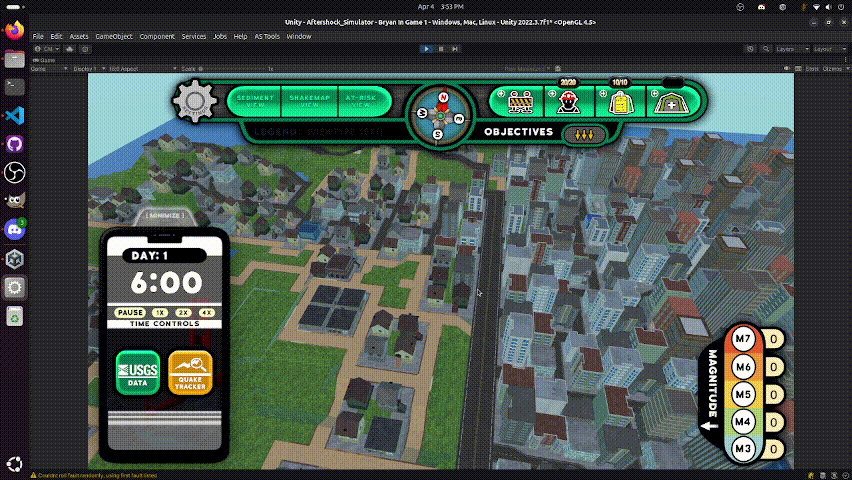Aftershock Simulator - Sprint 25
For Sprint 25, we did a great amount of work, which I’m really proud of the team for doing. There were a good amount of edits we did to the text and the UI of the games. We were able to get in an extra person to help fix a few bugs, and finally got to attacking our AI problem. We were even able to fit in a new mini text level and our prototype scenario creator. After all that, we created a build that I would consider is the most complete we’ve had yet.
From the previous sprint playtesting with Dan, he mentioned that the camera rotation was majorly off (despite none of us realizing it until he pointed it out) and that the visualization layers undrawing themselves was not unacceptable. The visualization layers undrawing was a thing before I came onto the project, so I figured that was something that would have been too difficult to change. But luckily, we were able to get a person to help us fix these up, and within the sprint too! I was a bit worried that the documentation we had would have been too large for him to consume, but it worked out perfectly! Big thanks to Chase from the Steel Specter team!
One thing we had also noticed was the large amount of tris and vertices in the game. Our game making a laptop turn into a jet engine was nothing new, but I had no clue that there were literally more than a million triangles on our little scene. Unfortunately, the initial team had made a custom LOD system, so controlling the LODs of the buildings would have been unfeasible within our development timeframe. Our fix for this was mainly just restricting the zoom so that the buildings don’t load in the higher poly versions.
Previously, we had turned off the AI since we weren’t really doing anything with it, but now we’re going to need it if the player wants to mess around with things in the sandbox level. At certain times of the day (rush hour times), the amount of things in the map balloon in value, which greatly reduces the frame count. Also, we noticed that the models that do spawn in had lower poly versions, so we switched out those models. The difference is incredibly miniscule when you look at it in the game anyway (except for maybe the people, but the AI models are tiny regardless). That replacement was thankfully simple.
Another thing that we got into the game was a small text level about the difference between magnitude and MMI. I remember the USGS people mentioning that we needed to make sure to teach players about the difference. Many people get them mixed up a lot of the time and even we on the team were a bit confused about it too.
We also added in the scenario creator into the sandbox level. The functionality was always in the game, but it was merely a Unity tool so players were never able to actually use it. Now, the player should be able to add in quakes of their own volition and see the results!
We ended the sprint really strong, and the next one should be a shoe-in as well. There’s only one more sprint left to really add in new features and make large changes. The only things we really have left are related to the scenario creator, so we’ll be going full force into making sure it looks and works properly. We also need to create a scenario based on the Turkiye data that the USGS people gave us, and a sprint’s worth of time should be ample time to figure it out. I had my doubts earlier in development, but I really think we’ll be able to get something good for the future conference that we’ll need to present the game in.


.gif)





Comments
Post a Comment